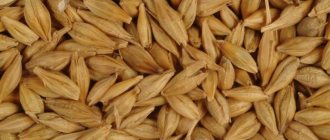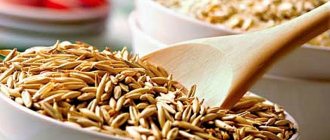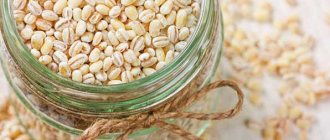The effect of cereals on a sore stomach
Gastritis can be caused by:
- Poisoning.
- Regular overeating.
- Experiences, stress.
- Smoking, alcohol abuse.
- Meals are dry, without first courses.
Oat decoction for gastritis is famous for a number of beneficial properties. The enzymes and amino acids included in the product improve digestion and further absorption of food. In addition, the cereal is capable of:
- Neutralize acute or chronic inflammatory process - especially if it occurs in the organs of the digestive system.
- Envelop the affected walls. Oats act as a protective barrier - preventing harmful foods from injuring the inflamed mucous membrane. She recovers much faster, discomfort decreases.
- Normalize acidity. To prevent chronic gastritis from developing into an ulcer, doctors advise drinking oat decoctions.
- Remove toxins.
Contraindications for use
Oats are a healthy product used in cooking and folk medicine. The cereal has healing properties. Like any medicine, it has contraindications. These include:
- diseases of the cardiovascular system
- hypersensitivity to oats and the substances they contain
- cholelithiasis
- renal failure
Oats for the stomach and the entire gastrointestinal tract will be beneficial if you strictly follow the doctor’s recommendations, properly prepare and dosed consumption of products based on it.
How is the decoction prepared?
Only whole grains are suitable for cooking. First, they are washed thoroughly to remove all debris. Then dried and crushed. It is very convenient to do this using a blender. 1/2 cup is poured into the pan. Pour in 500 ml of water. Then cover with a lid and cook for half an hour over low heat. The saucepan must be covered with a lid. When the oat broth is ready, cool it and filter it several times.
If the drug is prepared correctly, it has a thick consistency, somewhat reminiscent of jelly. Before starting treatment, the decoction is diluted with boiled water so that the total volume is 500 ml. Then divide into three parts, drink on an empty stomach 3 times a day. It is recommended to conduct such courses every year, the duration of treatment is 5-6 months.
What herbs treat gastritis?
Herbs for gastritis must be used with caution. They can bring both benefit and harm. Before drinking a herbal decoction, you should consult your treating gastroenterologist. In this article we will look at the most popular herbs that are used in the treatment of gastritis.
What plants can be used
Herbs for gastritis are only an additional method of treatment. They must be combined with diet and drug therapy.
For gastritis, the following plants can be used for treatment:
- aloe;
- rose hip;
- sea buckthorn;
- yarrow;
- celandine;
- sagebrush;
- oats;
- celery;
- mint;
- St. John's wort;
- plantain;
- Ivan grass;
- sorrel.
Next, we will consider the action and preparation of each of this plants in detail, and give recommendations for use.
But you should make a final decision about taking these folk remedies only after consulting with your doctor.
Yarrow
Yarrow can be used in the treatment of any type of chronic gastritis. It is suitable for the treatment of gastritis with high, normal and low acidity. Yarrow is an excellent anti-inflammatory agent. It is also used for peptic ulcers of the stomach and duodenum. Yarrow is contraindicated for use by pregnant and breastfeeding women.
To prepare a decoction with yarrow, you need:
- pour one tablespoon of herb into 250 ml of boiling water;
- cover with a lid and let sit for 30-40 minutes;
- then strain through a strainer or cheesecloth.
Also, it can be part of medicinal preparations for the treatment of gastritis. You need to take a decoction of yarrow 60-80 ml three times a day before meals.
When taking yarrow, it is possible to develop an allergic reaction, which can manifest itself in the form of a rash and itchy skin.
Celandine
Celandine is effective in the development of chronic atrophic gastritis. Also, celandine can be used for peptic ulcers. It has anti-cancer properties and can protect inflamed mucosa from the development of malignant tumors. Celandine can be used independently or as part of herbal preparations.
To prepare tea with celandine, pour boiling water over half a tablespoon of the herb. You can combine it with mint. You need to drink tea with celandine and mint half a glass 3 times a day after meals.
You can also use celandine juice in combination with garlic juice. Garlic for gastritis should be used with caution. Celandine and garlic juice for gastritis should be taken together with honey in a ratio of 1:1:4. You can also add butter there.
Sagebrush
Wormwood can be used for low acidity of gastric juice. It stimulates the entire digestive system. The taste of wormwood is slightly bitter, and you can add honey or sugar to the tea.
To prepare wormwood tea:
- take a teaspoon of dried herb;
- fill it with 500 ml of boiling water;
- cover with a lid;
- After 20 minutes, strain.
You need to take wormwood in this form, 50 ml half an hour before each meal. The course of treatment with wormwood is 3-4 weeks.
You can use a pharmacy alcohol tincture of wormwood. You need to take 4-5 drops, dissolving them in a glass of warm boiled water.
Please note that wormwood is contraindicated for:
- pregnancy;
- breastfeeding;
- kidney diseases.
Also, wormwood is not recommended for people who drive a car.
In case of an overdose of wormwood, the following develops:
- nausea;
- vomit;
- depression of consciousness;
- kidney damage.
Oats
Oats are an excellent remedy for the treatment of inflammatory processes that occur not only in the mucous membrane of the stomach, but also in the esophagus.
Oats can relieve:
- heartburn sensations;
- relieve pain syndrome;
- improve digestion.
You can take oats for any type of gastritis.
To prepare you need:
Grind the oats in a blender.
- grind oats in a blender;
- then, 1 tablespoon of oats should be poured with a glass of boiling water;
- and put this liquid in a steam bath;
- when you see that the broth has acquired a slimy consistency, remove it from the bath;
- Instead of water, oats can be poured with hot milk.
You need to take three tablespoons of oat decoction 15 minutes before meals.
Celery
Celery is indicated for the treatment of chronic gastritis with low acidity of gastric juice. Celery contains essential oils that stimulate the secretory activity of food glands and stimulate the production of gastric juice.
The use of celery for gastritis with high acidity is contraindicated and can lead to exacerbation of inflammation of the gastric mucosa.
To prepare you will need:
- grind the celery root in a blender;
- add 500 ml of water;
- boil.
You need to drink this decoction two tablespoons before meals 3 times a day.
You can also drink celery juice. You need to take it 1 tablespoon before meals. Celery juice can be diluted with water or added to food.
If after taking celery you experience nausea, heartburn, or stomach pain, it is better to stop using it.
Mint
Mint is used to relieve inflammation from the gastric mucosa. It is effective against increased acidity of gastric juice. Mint can be used alone, or in combination with St. John's wort, fireweed and yarrow in a herbal mixture.
Mint should be used carefully by people who drive a car, as it has a sedative and hypnotic effect.
In combination with St. John's wort, it has an antiseptic and anti-inflammatory effect on the stomach.
To make mint tea, you can use its dry leaves, or buy it in bagged form at the pharmacy.
- Pour 1 teaspoon or 1 bag of mint into a glass of boiling water;
- let this tea cool down.
You can drink mint tea 100 ml 2 times a day before meals. In the evening, you can add 1 teaspoon of butter and honey to mint tea.
St. John's wort
St. John's wort is an excellent remedy for the treatment of gastritis. St. John's wort relieves inflammation of the stomach, helps in the fight against Helicobacter pylori infection, and restores the natural intestinal microflora. St. John's wort is considered one of the most powerful antiseptic natural remedies.
St. John's wort tea is very easy to prepare. Pour 1 dessert spoon of herbs with a glass of boiling water and let them brew. You need to drink this tea 3 times a day, after meals.
Also, St. John's wort is included in medicinal preparations. It combines well with mint and fireweed.
Plantain
Plantain has a healing effect on the gastric mucosa. For medicinal purposes, plantain should be collected away from road routes, as its leaves absorb dirt and car exhaust. Plantain is most effective for gastritis with low acidity.
To prepare tea with plantain, pour 1 tablespoon of its dry crushed leaves with a glass of boiling water. You need to drink 50 ml 15 minutes before meals.
Plantain can be combined with rose hips. Rose hips for gastritis are indicated for low or normal acidity. It is also necessary to drink a decoction of plantain and rose hips before meals three times a day. You can add a teaspoon of vegetable oil to it.
blooming Sally
Ivan grass (Ivan tea) is an ancient remedy that is used in the treatment of chronic inflammation of the stomach. Ivan tea contains amino acids and essential oils, which help relieve inflammation and restore digestion.
Also, Ivan grass is effective in treating:
- peptic ulcer;
- increased gas formation in the intestines;
- dysbacteriosis.
To prepare the decoction, pour a teaspoon of Ivan herb with a glass of boiling water and let it brew for 2 hours. You can drink half a glass 3 times a day before meals.
It can be combined with various herbs, such as mint and St. John's wort, and prepare herbal teas with them.
Sorrel
Sorrel can be used for low acidity of gastric juice. Sorrel itself is sour and stimulates the secretion of food glands. In case of high acidity, it is prohibited, as it can cause an exacerbation of the disease. Sorrel can be added to food, or made into tea or decoction.
Pour 500 ml of boiling water over a tablespoon of sorrel. Drink this decoction 50 ml 3 times a day before meals. You can add a teaspoon of vegetable oil to it. Thanks to the oil, digestion and motor skills will improve.
Sorrel can be added to the collection and used together with wormwood and plantain.
If heartburn and stomach pain occur after taking it, treatment with sorrel should be stopped.
Aloe
Aloe for gastritis is used in the treatment of any form of this disease. Aloe juice promotes tissue healing and restoration, has an antitumor effect, relieves pain, heartburn and inflammation.
Aloe for gastritis can be used in the form of juice. Before meals, drink 10 drops of aloe juice. You can add vegetable oil or honey to it.
Sea buckthorn
Sea buckthorn for gastritis is used to heal the gastric mucosa. Sea buckthorn oil is sold in every pharmacy and is an affordable and effective medicinal product.
Sea buckthorn oil should be taken one teaspoon after meals 3 times a day. The course of treatment is 1 month.
Herbal combinations
The pharmacy sells ready-made herbal mixtures for the treatment of gastritis for different acidity of gastric juice. You can also prepare the mixture yourself, selecting herbs that combine their effects on the stomach.
Different herbs have different effects on the gastric mucosa. For example, mint reduces the secretion of gastric juice, and celery stimulates and enhances it. Plants can be used individually or combined in collections.
Treatment of chronic gastritis with folk remedies should be carried out after consultation with the treating doctor.
Subtleties of preparing oat infusion
Let's move on to the next, no less effective recipe, which allows us to alleviate the patient's condition and put gastritis into remission. It’s worth trying an oat infusion, which is very easy to prepare:
- Unrefined grains in the amount of 1/2 cup are washed in running water, 500 ml of liquid is poured.
- Oats filled with water are infused for 12 hours. That is, you can pour the grains in the evening and proceed to the next stage of preparation in the morning.
- In the morning, put the oats and water on the fire, bring to a boil and simmer for 30 minutes over low heat.
- The finished liquid is infused for another day.
- The next morning, it is filtered and diluted with boiled water so that the total volume of the medicine is 500 ml.
- The oatmeal potion is divided into three parts and drunk by the patient before sitting down at the table.
Alternative treatments with oats
Not only decoction and infusion have proven effective in treating gastrointestinal ailments. There are many other ways to use grains to solve digestive problems. We bring to your attention several alternative recipes:
- Grains + honey. A tablespoon of unpeeled oats is crushed (for example, in a blender), and 500 ml of boiling water is poured. You need to leave the drug for 60 minutes, filter and mix with a teaspoon of honey. The product is divided into three equal parts. The duration of the course is 6 months.
- Grains + water. Fill a glass of pre-washed grains with 1000 ml of water for 24 hours. After a day, boil for 30 minutes. When cooled, not strained, take 100 g.
- Whole grain porridge. You will need to rinse the unrefined grains, pour boiling water in a ratio of 1:1, and put on fire. As soon as the oatmeal boils, cool it. Every day it is recommended to eat 3 tablespoons of porridge before meals.
Oats for the Stomach: benefits for the human body | TOP recipes
Oats are an annual cereal plant. Thanks to its unique composition, it has found application not only in cooking, but also in medicine. Porridges, decoctions, infusions, and jelly prepared from cereals are successfully used to treat diseases of the gastrointestinal tract.
Chemical composition and properties of cereal
The plant is filled with substances beneficial to the human body. The product contains large quantities of fiber, proteins, fats, vitamins and microelements.
In 100 g of oats the following was found:
- protein 10 g.
- fat 6.2 g.
- carbohydrates 55 g.
- fiber 12 g.
Oats have a low glycemic index, since the carbohydrates included in its composition are 99% starch. The grain of the plant contains 12 essential amino acids and about 2500 mg. Omega-6 fatty acids.
The substances contained in the product have a therapeutic effect in the treatment of a number of diseases of the gastrointestinal tract. Under the influence of cereal components, the following occurs:
- improvement of metabolism
- boosting immunity
- accelerating the healing process of wounds, erosions and ulcers
- maintaining a balance of micro and macroelements
Treatment of diseases of the digestive tract with oats is recommended by official medicine as an additional therapy.
Treatment of gastritis
Gastritis is an inflammation of the stomach lining. Oats gently act on the walls of the stomach, enveloping them with a film. Enzymes and amino acids present in the cereal help restore damaged areas.
The therapeutic effect is manifested from several sides:
- The acidity of gastric juice is normalized.
- The development of Helicobacter pylori is suppressed.
- The feeling of heaviness in the stomach disappears.
- Painful sensations are reduced.
Does oat bran help?
If you have a hyperacid form of the disease, oats for gastritis with high acidity will come in handy. According to many gastroenterologists, ground oat grains contain trace elements necessary for digestion. They are gradually included in the daily diet, since this product itself is tough.
It is advisable to alternate dishes prepared from whole grains with gentle food. For example, porridge cooked from bran, flakes. The latter are incredibly tasty together with fruits - both fresh and dry.
Another benefit of bran is that it can be added to various dishes. For example, bake a diet pie, prepare a salad with bran, soup. Bran will be an excellent addition to vegetable and minced meat.
How to prepare and use jelly?
Oatmeal jelly is an incredibly healthy drink. To prepare, you only need cereal and water. The crushed cereals are poured with liquid in a ratio of 2:1 and left for twelve hours. After straining, place on low heat. How long to cook? Until the water in the pan resembles jelly.
How much do you drink oat jelly for gastritis? The recommended dosage is half a glass before breakfast, lunch, and dinner. Don’t rush to throw away the remaining cereal - you can make excellent porridge from it.
Admission rules
The healing composition is consumed warm, 200 ml on an empty stomach. The main condition for the effectiveness of treatment with oatmeal jelly is regular use.
The duration of the course is determined by the attending nutritionist. Typically, the dish is included in the diet before recovery and then used as part of maintenance therapy.
For gastrointestinal pathologies
If there are problems with the functions of the gastrointestinal tract, it is necessary to include this medicinal drink in the diet, thanks to regular use of which it will be possible to avoid the development of complex diseases of the internal organs:
- after a starvation diet in the treatment of pancreatitis, patients are advised to boiled vegetables and oatmeal jelly;
- Thanks to regular consumption of a viscous cereal drink for gastritis, the acidity in the stomach is normalized. A pronounced therapeutic effect is achieved by including this dietary dish in the morning meal;
- Oatmeal drink is useful for stimulating intestinal functions during constipation. The composition helps improve peristalsis, removes toxins from the body, and gives strength to eliminate the disease.
For constipation, rolled oatmeal jelly is consumed warm in small portions before bed.
To cleanse the liver
Drink jelly with the addition of dry fiber on an empty stomach, then take a teaspoon of honey. 30 minutes after taking a healing cereal cocktail with honey, a breakfast of natural yogurt is recommended. Such a meal helps to effectively cleanse the liver, improves blood circulation, and accelerates the detoxification processes of the body.
For weight loss
Nutritionists recommend regularly taking oatmeal jelly for weight loss as an effective means for harmless weight correction. The best time to take it is considered to be in the morning; a viscous drink with a characteristic cereal taste will help you start the day in a cheerful mood. 1 glass of freshly prepared jelly will completely replace a diet breakfast and can provide a feeling of fullness for 2-3 hours. To optimize the effect, dilute the cereal dish with boiled water. This causes intense swelling of the fibers in the stomach, resulting in a feeling of fullness for a long time.
Ingredients for making oatmeal jelly








